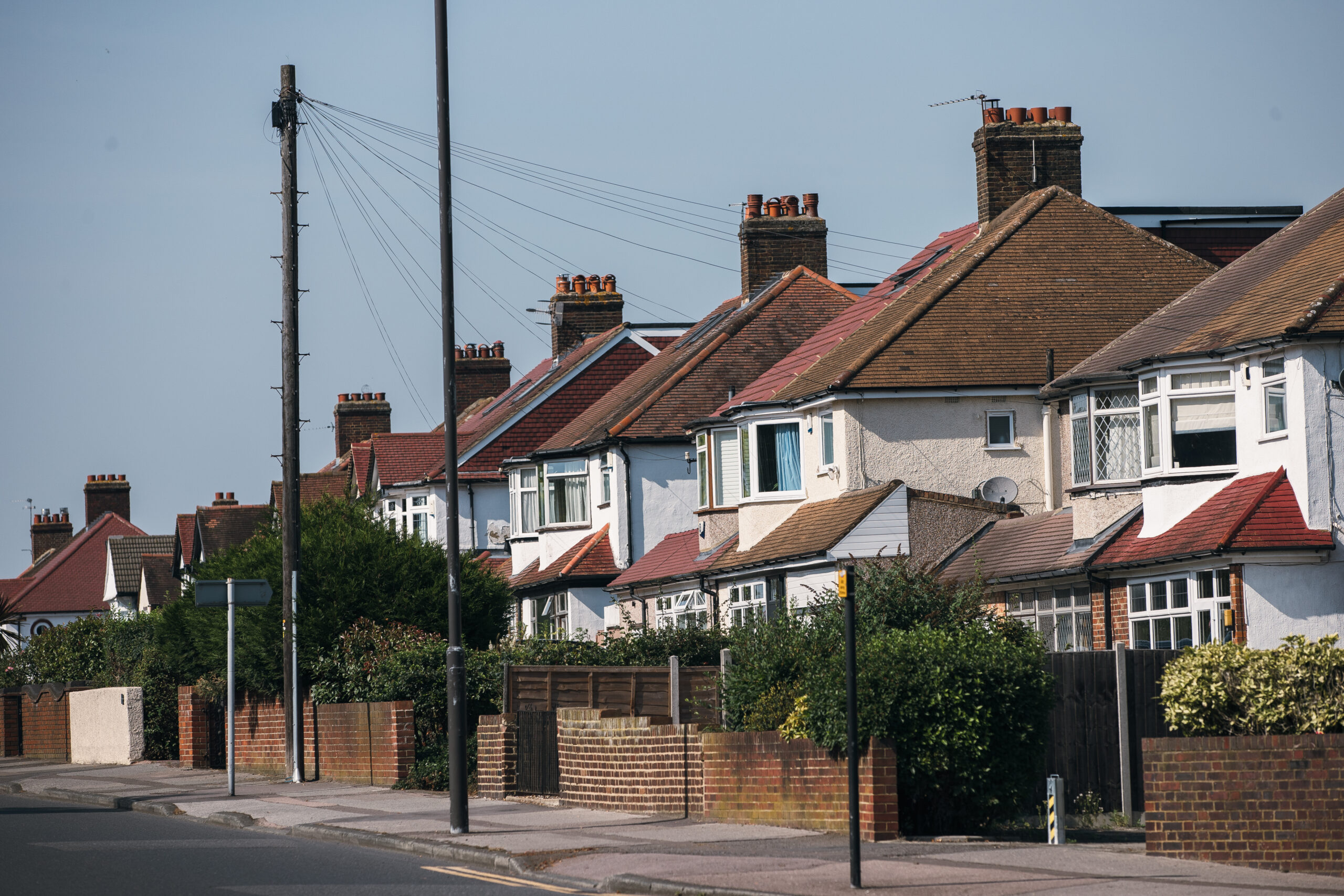New data shows more than 1 in 4 of us live in homes that could harm our health
- New research commissioned by Health Equals has revealed that 15 million people in the UK live in homes with issues like damp, mould or cold.*
- Those from low-income households, renters and the West Midlands and Yorkshire and the Humber are particularly affected
- These issues are known causes of respiratory and cardiovascular symptoms, depression and anxiety
- Good quality housing is a key building block of our health. Health Equals and its members are calling for a cross-government Health Inequalities Strategy to make health equal across the UK
Data released today by Health Equals, the UK’s campaign to improve health inequalities, has revealed that 28% of people in the UK report living in homes with damp, mould or cold.
This rises to 42% of people in the West Midlands and 39% in Yorkshire and the Humber.
The nationally representative survey of 3,982 people in October 2025 also showed that some people are much more affected by these health-harming issues than others.
People from the lowest income households are almost twice as likely to live in homes with issues like damp or mould (21% vs 12%), and four times as likely to live in a cold home (25% vs 6%) than the highest income households.
21% of renters have issues like damp or mould, rising to 23% for those in rented social housing.** And almost half (47%) of people with issues like damp or mould have children living with them.***
Being exposed to damp, cold and mould for a long time can cause or worsen existing conditions like asthma, cause other respiratory symptoms like coughing and wheezing, cardiovascular issues like heart palpitations, and mental health conditions like stress, anxiety and depression. At their worst, like in the tragic case of Awaab Ishak, non-decent housing can cause death.****
Almost half (47%) of people who have experienced issues like damp or mould have reported symptoms caused by it, like respiratory and cardiovascular symptoms, depression and anxiety for someone in their household. 61% of these said someone in their home required medical treatment for their symptoms, rising to 75% for people living in Greater London. 28% said they themselves had to miss work as a result, and 31% said their children had missed school.
Dr Andy Whittamore, a practising GP and Clinical Lead at Asthma + Lung UK, member of Health Equals, said:
No one should have to live in a home that harms their health, yet as this new research shows, that is the reality for millions of people in the UK. Living in damp or mouldy housing puts people living with chronic lung conditions like asthma and chronic obstructive pulmonary disease (COPD) at risk of life-threatening flare-ups and means they are more likely to need emergency care. Long-term exposure to mould can also cause lung conditions like asthma in previously healthy individuals.
Poor lung health has the closest link with deprivation of all the major health conditions. In fact, poverty is driving poor lung health to such an extent in the UK that, shamefully, we have the highest death rate in Europe for respiratory conditions. It’s high time for urgent government action to protect the health of the most vulnerable people in our society, ensuring everyone can stay warm and well at home.
Health Equals is supporting its expert members in calling for the government to:
- Apply Awaab’s Law so all landlords must respond promptly to life-threatening hazards, not just social landlords.
- Phase in and enforce the Decent Home Standard across all private rented homes before 2035. Renters shouldn’t have to live in unhealthy homes for another decade.
- Introduce the Warm Homes Plan to slash fuel poverty, improve warmth and repair homes for those most in need.
- Set a cross-government target to halve the number of ‘non-decent’ homes across all tenures and regions of the UK over the next decade.
Lives are being cut short in the UK by up to 16 years, fuelled by unequal access to the building blocks of good health which are things like the air we breathe, the money in our pockets, the work we do and, as this data shows – the homes we live in.
Paul McDonald, Chief Campaigns Officer at Health Equals, said:
Issues like damp, cold and mould aren’t just eyesores or inconveniences – they’re real and serious threats to health. And our latest data reveals the vast scale of this problem across the UK. Millions of people’s health is being put at risk every day, just from being in their own home.
The reality is that these issues are not felt evenly across the UK. People from lower income households, renters and those in certain regions of the country are worse affected. Inequalities like this are cutting lives short.
This is not just a housing crisis, it’s a health crisis. Awaab’s Law, brought into force today, is an important milestone, and this data shows we need to go further. We need to see a cross-government health inequalities strategy that prioritises prevention, sets ambitious targets and makes better health a shared goal for every part of government.
Paul Waugh, MP for Rochdale, said:
Decent homes are as essential to our health as the food we eat, the jobs we work in, and the communities we belong to. The tragic story of Awaab Ishak from my constituency is proof of just how severe the consequences can be when non-decent housing is left unchecked.
Awaab’s law, brought into force today, should ensure that stories like Awaab’s will never be repeated in social homes in Rochdale, or anywhere else. But this data from Health Equals reveals that over a third of people in the North West are living in homes that could make them ill, so we have more work to do. That’s why I’m proud to be a Health Equals Parliamentary Champion, working to put the building blocks of health at the heart of national policy-making and ultimately, Make Health Equal.
Tracy’s story
Tracy is 59 and lives in a council house in Bristol.
I’ve lived in this house for 27 years but it was only three or four years ago that the damp and mould started. It was especially bad in the front room which is my son’s bedroom. We started to see damp around the windows. Last winter the sheets and towels in the airing cupboard in that room were damp and we decided to empty it. It was after this that my son started having chest problems. The exposure to the damp and mould in the cupboard are what caused it. All of a sudden there was a rattling in his chest and he couldn’t walk across the living room without stopping for breath. It was a serious chest infection and it was really bad. The doctor put him on a course of antibiotics for around ten days.
I’ve got a low immune system myself and I’m on a course of chemotherapy. After my cancer diagnosis last year, I was on a much stronger course of chemotherapy and between this, the mould, and the council taking longer than promised to fix my bathroom, it was difficult to stay positive – it was draining on my mental health.
The council have patched up the mould in my son’s bedroom with a board but they have not fixed the root causes. There’s still damp in my kitchen as well and I’m worried about my son’s chest problem coming back this winter, as well as my own health.
NOTES
*28.24% of adults who carried out the survey who said “My home has problems with condensation, damp or mould” at D9 or answered “No” at Q2a ‘During the cold winter weather, can you normally keep comfortably warm in your living room?’ is 28.24%, which equates to approximately 15.5 million people. The percentage was multiplied by the UK population aged 16+ from the 2022 ONS mid-year estimate (55,190,347). Please note that this figure represents the number of adults in the UK, not households. “Issues like damp and mould” includes people who reported experiencing ‘problems with condensation, damp or mould’.
** Social housing is a subset of rented housing
*** Adults who answered ‘dependent children under 18 living at home’ for D8, ‘my home has problems with condensation, damp or mould’ to D9
**** Damp and mould are caused by excess moisture in the home, often because of leaking pipes, structural issues like cracked walls or poor heating and ventilation. Damp and mould are more likely to develop in colder winter months. https://scotland.shelter.org.uk/housing_advice/repairs/damp_mould_responsibilities



